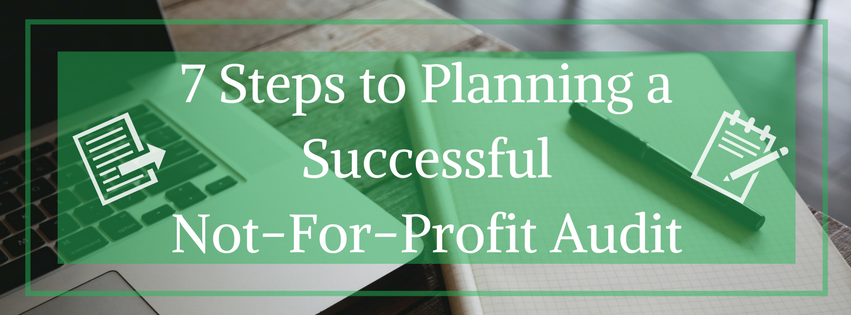Are you a not-for-profit organization preparing for your annual audit? Tim McCutcheon wrote these 7 steps so you can prepared.
Year-end financial statement audits serve a valuable purpose in helping maintain the financial integrity of not-for-profit organizations so they can successfully complete their missions. These audits can be more effective and less challenging with a little bit of preparation and planning on the part of the not-for-profit management and finance team.
This preparation starts with your accounting system, because everything you do on a monthly basis will pay dividends as you gear up for your year-end close and the audit. Chances are your accounting system is very good for everyday things, such as processing customer/donor billings, receiving payments, paying bills, and making payroll. And you probably do other things every month in the normal course of your monthly closing cycle, such as review and reconcile various accounts.
Having these processes in place provides a good start in preparation for your year-end audit. Here are a few more ideas to help your year-end audit go smoothly:
- Analyze, review, and reconcile significant balance sheet accounts. Use a roll-forward schedule to capture all the account activity. You and your auditor can agree as to the exact form and layout of the schedules to ensure they serve the dual purposes of the year-end close worksheet and audit schedule:
Beginning balance + additions – reductions +/- adjustments = Ending balance
Completing the schedule ensures that the account balances roll forward from the prior year end to the current year end, which provides assurance that the income statement effects of the changes have been properly recorded.
Below are the primary balance sheet accounts (and related income statement accounts) that you will want to reconcile and roll forward. Be sure to add other accounts to meet your organization’s unique needs.
- Meet with your auditor to confirm the audit plan and timeline. Be sure you both come away with a clear understanding of the who, what, when, where, how, and why for each step of the audit process all the way to delivery of the final reports. The result of these efforts will be a matrix of roles, responsibilities, and dates that you both agree to uphold. Review all the audit confirmations, schedules to be prepared, documents to be pulled, and other support functions your organization will provide to the auditor. Ask for items that can help reduce your work in preparing for the audit. You can find sample work-paper templates and auditor communications in the AICPA’s Not-for-Profit Resource Library.
- Talk to your internal accounting team. Discuss the expectations, concessions, adjustments, and accommodations needed to make the year-end closing plan work. Build some contingency time into your planning, as the unexpected has an uncanny way of sneaking into even the best of plans.
- Inform others in your organization about what to expect. Share your plan outside of the accounting department. Talk about what to expect from your team and the auditors when they arrive on-site. Now is a good time to reserve space for the auditors and ensure that adequate electrical outlets, internet service, photocopying/scanning, and other resources needed by the audit team will be ready and waiting when they arrive.
- Finish recording all the activity for the year. Before closing your fiscal year, post the accruals and adjustments necessary to put your books fully on GAAP basis of accounting. The objective at the finish is to have a closed general ledger that will need no adjustments by your auditor. As part of the closing process, you will be completing all the roll forward schedules and account reconciliations, adjusting depreciation, recording all payables and receivables, adjusting bad debt allowances, and so on. Be sure to perform a final check of roll forward schedules to be sure they agree with final general ledger balances.
- Have everything ready for the audit team when they arrive on-site. If possible, try providing items as they are completed, which will give your auditor a chance to review them in advance, potentially saving time for you and your auditor.
- Don’t forget to communicate. Kindness and communication throughout the year-end closing process will produce the best results, minimize stress, and make life more pleasant for all. Be sure to build in breaks and a little downtime to help everyone maintain a healthy balance and perspective as you work together through what can be a bit overwhelming at times.
Tim McCutcheon, CPA, is a partner in Eide Bailly LLP’s national not-for-profit practice, and he also serves as chair of the AICPA Not-for-Profit (NFP) Section’s Advisory Council.

